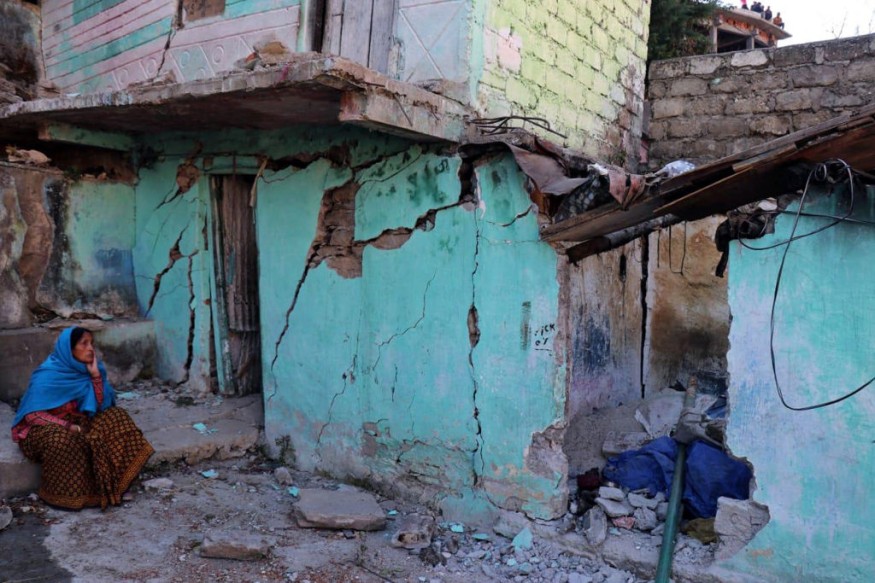Sinking land has been reported in the Indian Himalayan town of Joshimath, forcing hundreds of people to evacuate after a temple collapsed and cracks appeared in over 600 houses.
Local authorities over the weekend have halted construction activities and transferred hundreds of displaced residents to temporary shelters due to the mysterious event.
Sinking Land in Joshimath

The Associated Press reported on Saturday, January 7, that residents of Joshimath in Uttarakhand state said they started noticing cracks in their houses, especially after the 2021 flooding in the region.
The Joshimath temple collapsed on Friday, January 6, and people living nearby have already vacated the area on Thursday, January 5.
District administrator Himanshu Khurana stated over 60 families have been moved to government relief camps, and media reports said the number is likely to increase to 600 families, as further sinking of land and structural cracks are possible to continue.
Images from local television also showed cracks along roads, disrupting the movement of vehicles, according to AP News.
The sinking ground has drawn a lot of potential theories about its nature and cause.
A local disaster management official named Ranjit Sinha said the immediate cause of the said cracks were possible due to the fault drainage system under the town.
This structural defect has resulted in water seepage beneath the houses that led to their sinking, as cited again by the US news agency company.
The Indian government will reportedly pay 4,000 rupees or 50 US dollars for six months to assist residents who became homeless in Joshimath, a temple town with approximately 25,000 inhabitants that sits at an altitude of 6,200 feet.
The town is also a popular route for a Hindu pilgrim and trekking circuits, Khurana stated.
Pilgrim and Infrastructure Development
Tens of thousands of devotees pass through Joshimath, located 305 miles northeast of the capital New Delhi, in route for places of worship in Badrinath and Him Kund Sahib in Uttarakhand.
Reports said the large influx of pilgrims and tourists also led to the development of the town in terms over the years, in terms of the construction of buildings and roadways.
Experts said the "rampant infrastructure development" without a plant is causing the fragile Himalayan ecosystem to be more vulnerable to the impacts of climate change, which acts as a "force-multiplier," as cited by the Hindustan Times.
The experts on Sunday, January 8, stated land subsidence in Joshimath is due to a hydro power project being conducted by a company and warned that people are destroying the environment to an extent that is irreversible or to the point of no return, as cited by the Indian newspaper.
Local media reporting such as from India Today stated a committee of experts is scheduled to visit Joshimath on Monday, January 9, to survey the current conditions in the sinking Himalayan town, as well as provide their recommendations.
© 2025 NatureWorldNews.com All rights reserved. Do not reproduce without permission.





